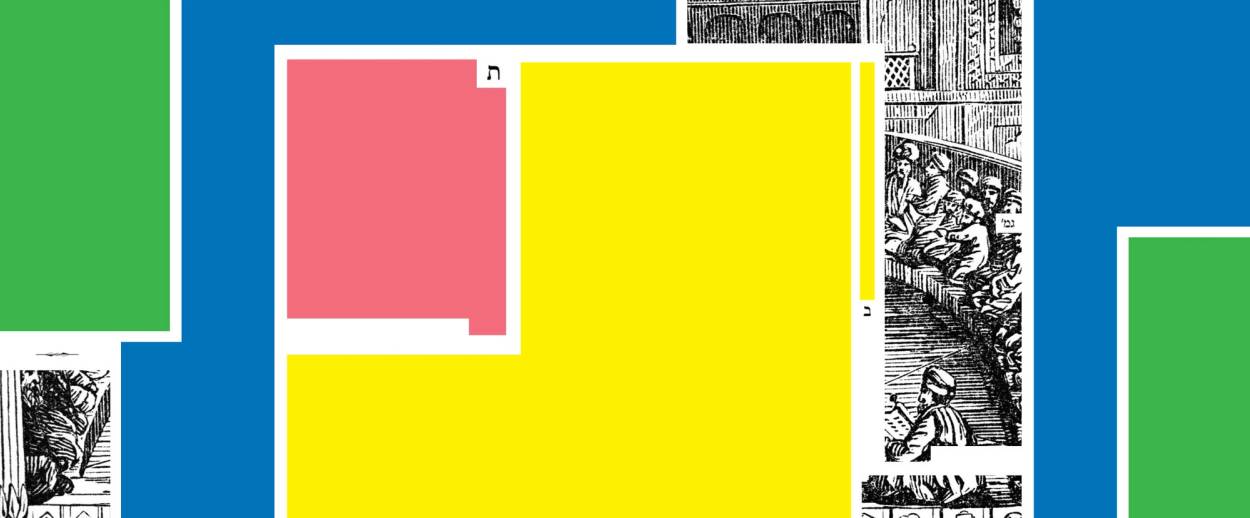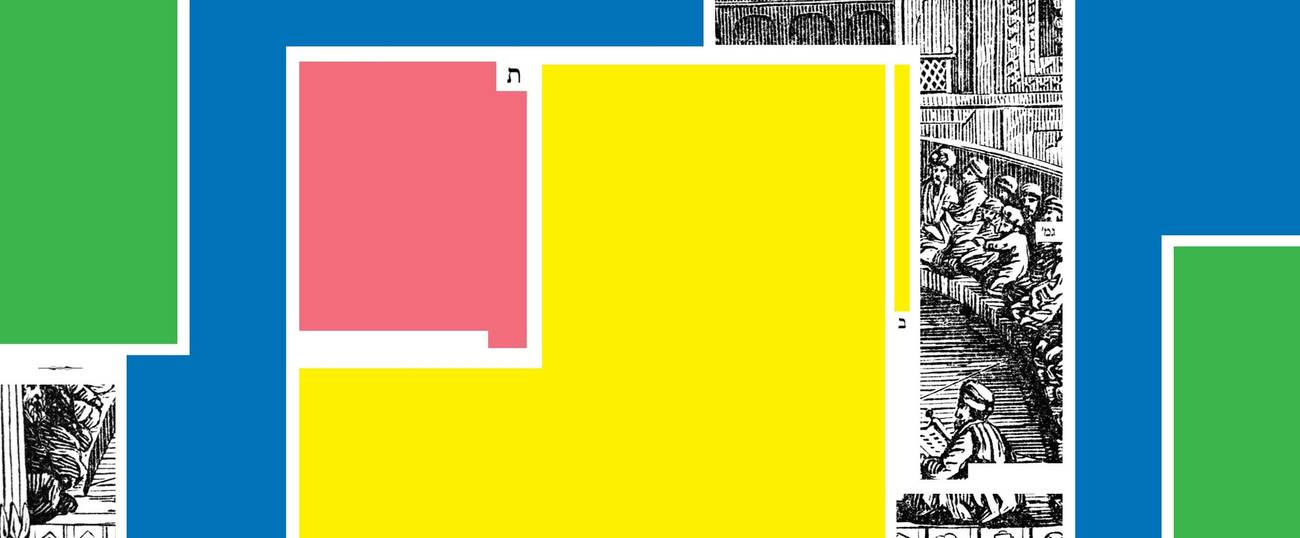Reading Torah Against the Grain
Daf Yomi: Do Talmudic rabbis seek justification for givens by retrofitting biblical text to their needs? The case of the Sanhedrin courts.




Literary critic Adam Kirsch is reading a page of Talmud a day, along with Jews around the world.
This week, Daf Yomi readers said goodbye to the sequence of “gates” that opens Seder Nezikin: Bava Kamma, Bava Metzia, and Bava Batra, whose names mean the first, middle, and final gates. These three sections were originally united in one enormously long tractate, whose subject, broadly speaking, is nezikin—“damages,” or what we call torts: civil wrongs involving various kinds of damage to person or property. Litigants in such cases, we saw throughout, would come before courts made up of three judges. But what about the courts themselves? What sort of men could serve as judges, what were their responsibilities, and how were they appointed?
The new tractate we began this week, Tractate Sanhedrin, focuses on the role of judges and courts in Jewish law. Fittingly, it is named after the body that held supreme judicial power in the Land of Israel during the Second Temple period and beyond. The Great Sanhedrin was a body of 71 judges sitting in Jerusalem; it appointed various Lesser Sanhedrins, made up of 23 judges, to hear cases in the towns and provinces of Judea. The Great Sanhedrin survived the destruction of Jerusalem in 70 CE and continued to meet in other locations until the fourth century CE.
During this era, the Jews were mostly ruled by outsiders: At various times, Judea was a province of the Persian, Seleucid, and Roman empires, with an interlude of independence under the Hasmonean dynasty founded by Judah Maccabee. Indeed, the name of the Sanhedrin testifies to the multicultural influences in ancient Israel, because it comes from the Greek synedrion, “sitting together.” This suggests that the Sanhedrin was a creation of the Hasmonean period, sometime in the second century BCE, when Greek language and influence were dominant in Judea. But its roots in Jewish tradition go back to the time of Moses; the first sentence of Pirkei Avot, the Ethics of the Fathers, traces a line of inheritance from Moses to Joshua, through the Biblical Elders and the Prophets, to the men of the Great Assembly.
As Daf Yomi readers learned this week, in the first pages of Tractate Sanhedrin, the number of men in this body was modeled after the 70 elders chosen by Moses to assist him in governing the children of Israel. Add Moses himself to the 70 elders and you get 71. There is also, of course, a pragmatic reason why a court of 71 is preferable to a court of 70: With an odd number of judges, there can never be a tie vote. As the Mishna says in Sanhedrin 2b, “A court may not be composed of an even number of judges.”
And why does a Lesser Sanhedrin have 23 members? Here the rabbis don’t have such a clear-cut historical precedent, and so they must engage in some ingenious textual interpretation. In Numbers 35, the Torah explains that in cases of accidental manslaughter, “the congregation shall judge” the crime and “the congregation shall save” the killer from the vengeance of his victim’s family. Now, a congregation or minyan is made up of 10 men; because the word is mentioned twice in the verse, it follows that the Torah envisions a court of 20 judges.
And how do we know that a minyan consists of 10 men? This can be deduced from another biblical passage, the story of the spies sent by Moses into Canaan. There were 12 of these spies, of whom two, Joshua and Caleb, brought back an encouraging report, while the other 10 were afraid of the Canaanites and discouraged the Israelites from trying to conquer them. When he heard the spies, Moses was enraged by their pessimism: “How long shall I bear with this evil congregation [minyan]?” he demanded. Evidently, the 10 spies who brought an evil report were enough to constitute a minyan.
So far, we have biblical warrant for 20 judges in a Lesser Sanhedrin. How do we get from there to the actual number of 23? “And from where is it derived to bring three more?” asks the Mishna in Sanhedrin 2a. The answer involves yet another Torah verse, Exodus 23:2, which is usually translated as “you shall not follow a multitude to do evil.” Here, the rabbis interpret it as meaning “you shall not follow a multitude to convict”: That is, a simple majority of one cannot convict a suspect of a crime. While a majority of one can acquit, it takes a majority of two to convict—an institutional mechanism that biases Jewish courts toward leniency. For this reason, a court of 20 needs two additional judges, making 22; and because a court needs an odd number of judges, one more is added, bringing the total to 23.
As is often the case, the way the rabbis find a precedent for an existing Jewish law or custom in the Torah may strike the reader as far-fetched. I often wonder whether these are exercises in ex post facto justification. Perhaps the Lesser Sanhedrin had 23 judges for some other reason or none at all; maybe the number was arbitrary, the way the Supreme Court has nine judges simply because the Congress decided it should. But the rabbis of the Talmud shun arbitrariness; for them, everything in Judaism can ultimately be traced back to the Torah. If that means reading the Torah against the grain to find the necessary answer, so be it.
The first Mishna in Chapter One explains that different kinds of cases are judged by different sizes of courts: in general, the more serious the potential punishment, the more judges are needed. Ordinary civil cases, which involve payment of damages or a fine, are heard by a panel of three judges; but cases that could lead to the imposition of lashes, or even the death penalty, must be heard by 23 judges. As the Mishna notes, this includes cases in which the defendant is not a human being. When an animal is involved in bestiality, or when it causes injury to a human being, Torah law provides for its execution; in such cases, it is tried by a court of 23, just like a human being liable to the death penalty. This includes farm animals such an ox as well as wild animals such as “a wolf or a lion, a bear or a leopard, a cheetah or a snake.”
As for the Great Sanhedrin of 71 judges, its authority is required for matters of state importance. For a king to declare war, or for a city to be considered idolatrous—and therefore suitable for annihilation—the consent of the Sanhedrin is required. This suggests that the Sanhedrin is something between a legislature and a judicial body, combining powers that in the United States belong to the Supreme Court and the Congress. Perhaps in a theocratic state, the distinction between these branches of government is inevitably blurred. The Sanhedrin, like the rabbis of the Talmud, does not and cannot legislate, because in a Jewish kingdom God is the only lawgiver. Human beings can only interpret the laws, finding ways to adapt them to novel circumstances and needs. Sometimes, as we have seen, these interpretations are broad indeed; but ultimately they rest on divine authority. In this sense, the State of Israel is a republic of the Jewish people, not a Jewish commonwealth as envisioned by the Bible and the Talmud.
***
Adam Kirsch embarked on the Daf Yomi cycle of daily Talmud study in August 2012. To catch up on the complete archive, click here.
Adam Kirsch is a poet and literary critic, whose books include The People and the Books: 18 Classics of Jewish Literature.